Traffic Circles and Roundabouts
Learn how traffic circles and roundabouts can improve safety and traffic flow.
Traffic circles
A traffic circle is a raised island in the centre of an intersection. Drivers must go in a counter-clockwise direction in the circle, and must signal when entering and exiting. The centre island can be landscaped or made of coloured asphalt to increase visibility and attractiveness. In neighbourhoods where there are space constraints, there may not be landscaping.
All drivers must yield to traffic and other road users already in the circle. Drivers are expected to travel at much slower speeds around traffic circles than roundabouts. However, the rules of the road are the same for traffic circles and roundabouts.
Traffic circles are smaller than roundabouts and are usually installed in residential neighbourhoods at low-traffic intersections.
Benefits of traffic circles
- Drivers must slow down to enter. This helps reduce the frequency and severity of crashes that may occur and can reduce the number of drivers exceeding the speed limit.
- They provide right-of-way control and clarity.
- They help reduce conflicts between vehicles and almost eliminate the most severe types of crashes - right-angled and left-turn collisions.
Roundabouts
Roundabouts are larger than traffic circles. They have raised splitter islands on all approaches and allow only one-way traffic around a central island. Like traffic circles, drivers entering the roundabout must yield to other traffic and road users already in the roundabout and must signal when entering and exiting.
A roundabout is a traffic control element that is equal to a traffic signal. Sometimes roundabouts are a better option for a location than a traffic signal at an intersection. Roundabouts are installed on busier roads than traffic circles.
Benefits of roundabouts
- Drivers must slow down to enter. This reduces the frequency and severity of crashes that may occur and can reduce the number of drivers exceeding the speed limit.
- They reduce the potential for "T-bone" and head-on collisions.
- They simplify the right-of way for road users.
For more information on roundabouts, see ICBC's Driving Tips for Roundabouts. Emergency vehicles and long service vehicles may need to proceed through these intersections in different ways.
-
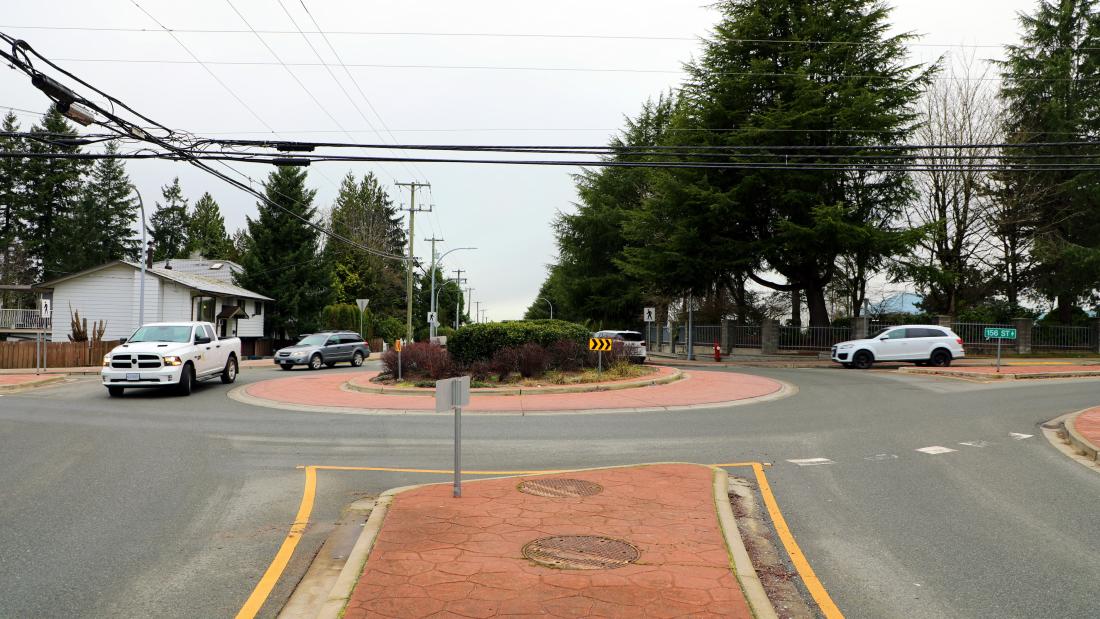
Roundabout
Roundabout with vehicles in it
-
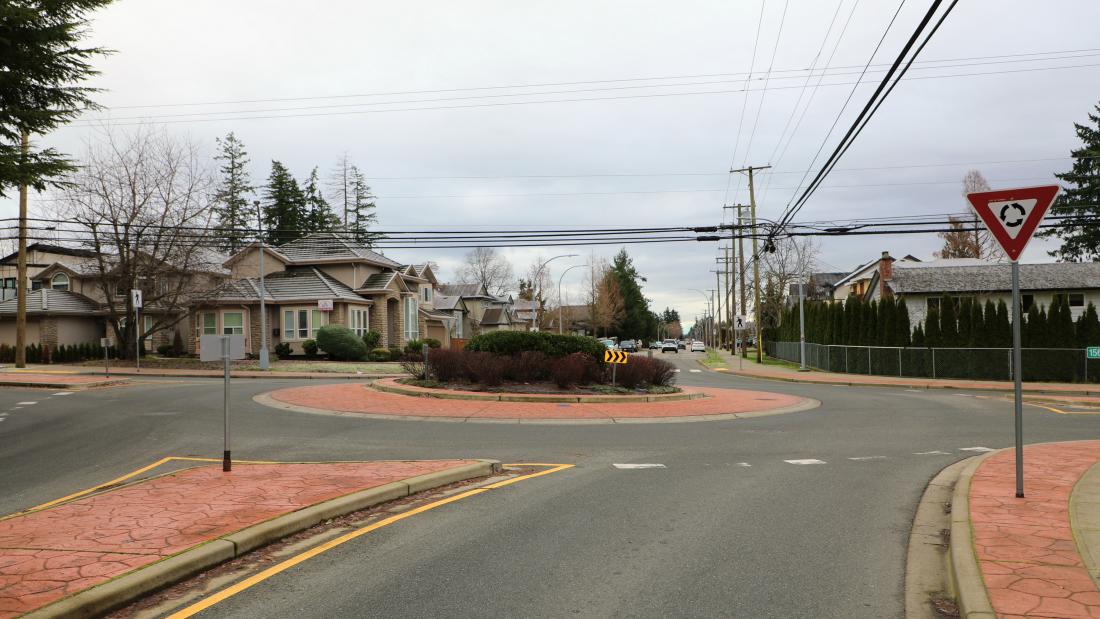
Roundabout
Roundabout with raised splitter islands and a yield sign
-
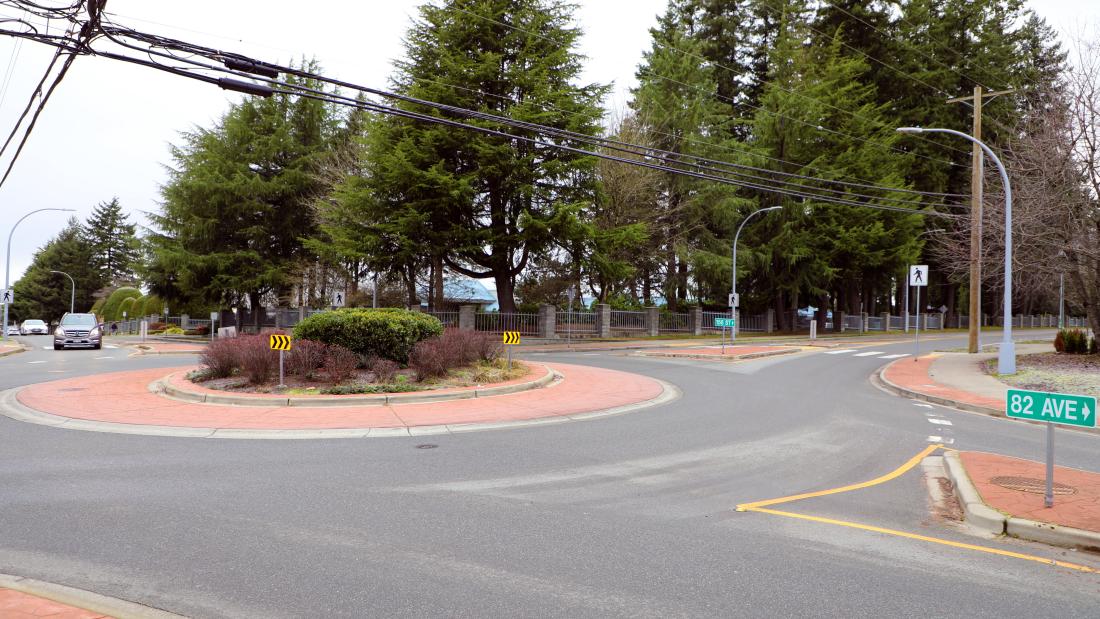
Roundabout
Roundabout with raised splitter islands with a truck approaching
-
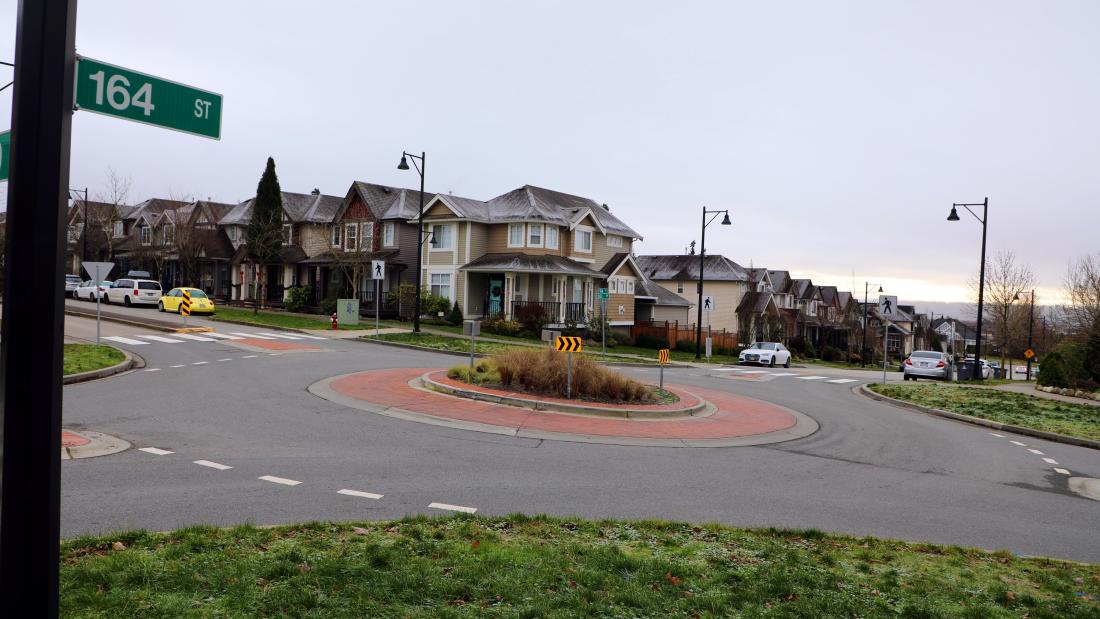
Traffic Circle
Traffic circle at 164 street
-
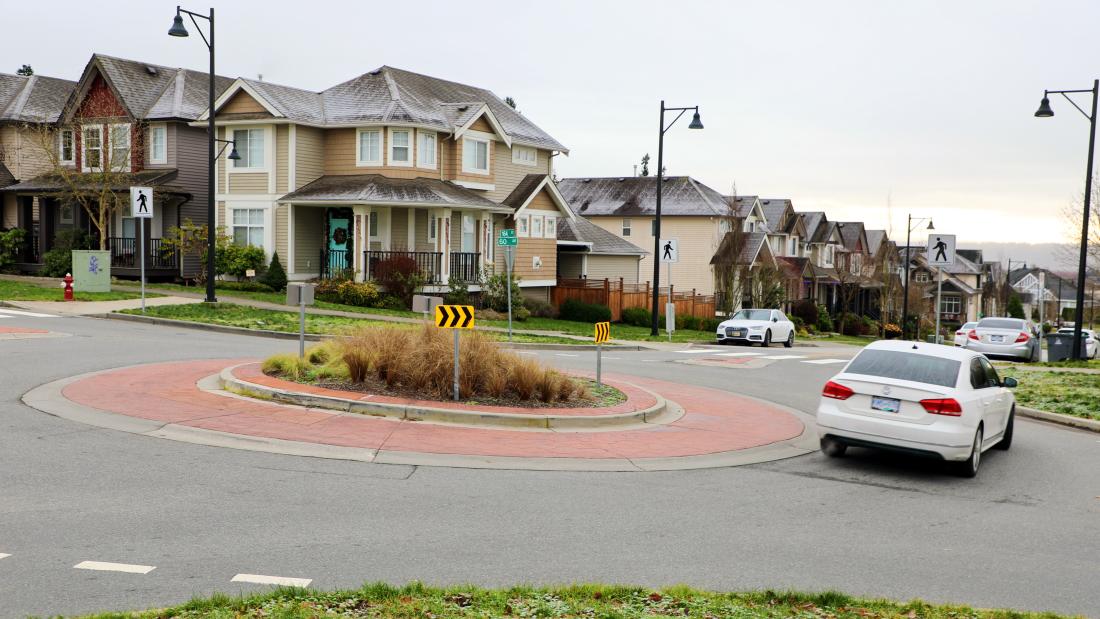
Traffic Circle
Traffic circle with landscaping and a vehicle going around it
-
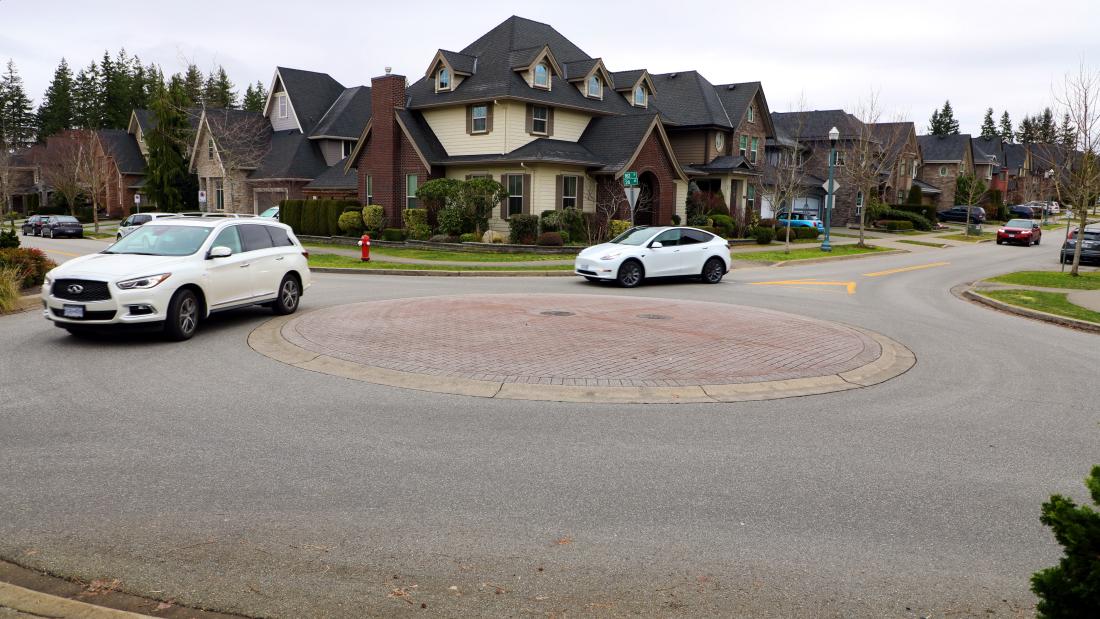
Traffic Circle
Traffic circle with no landscaping with vehicles around it
-
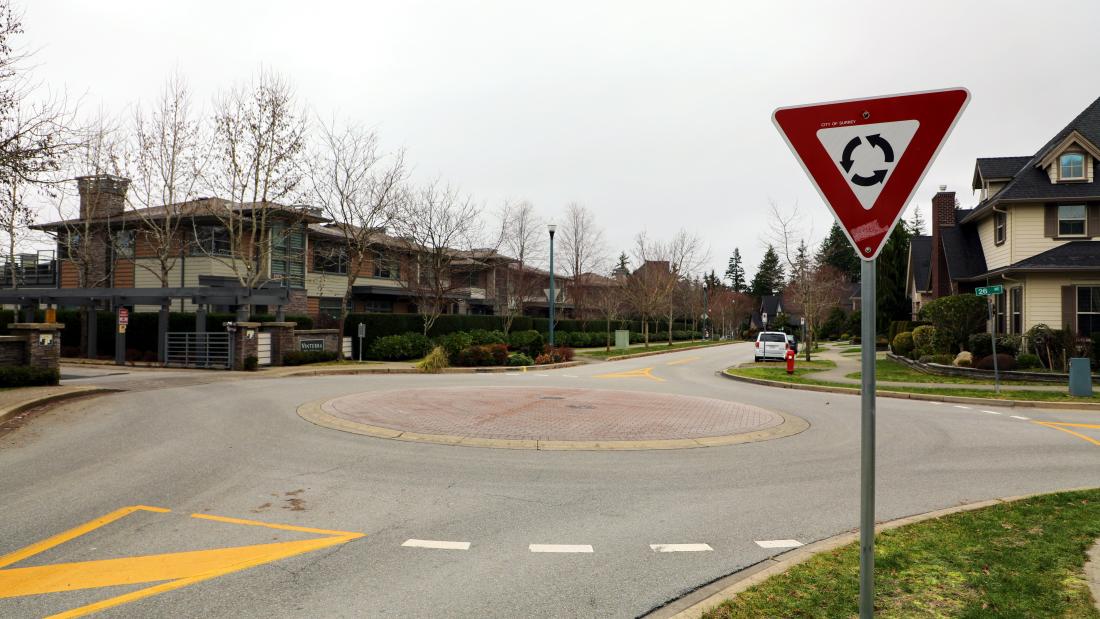
Traffic Circle
Traffic circle with no landscaping with vehicles around it and a yield sign
-
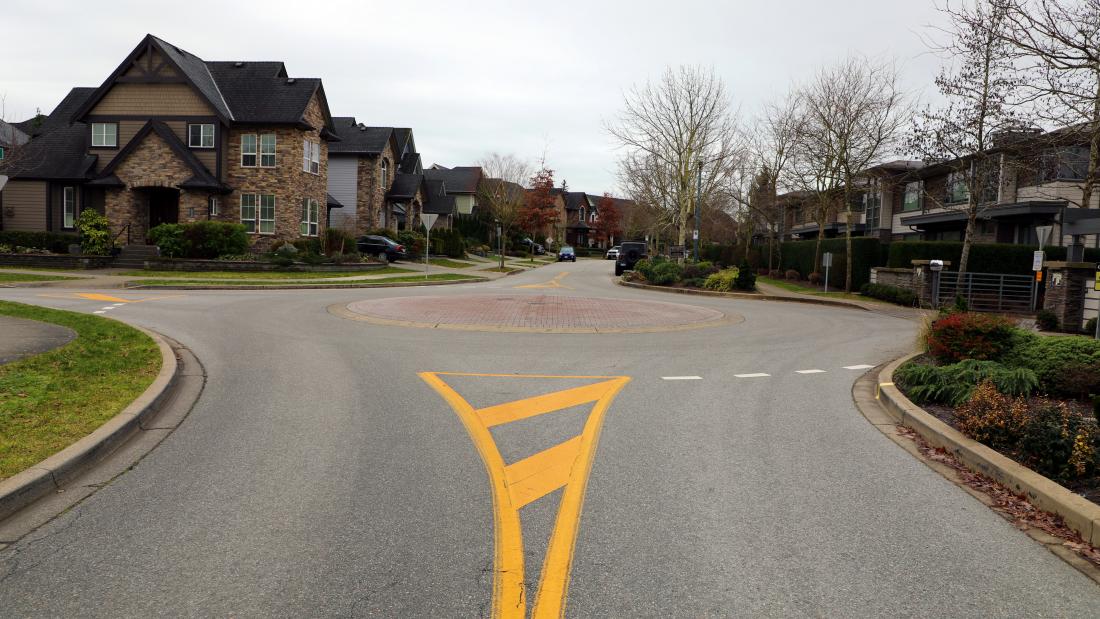
Traffic Circle
Traffic circle with no landscaping